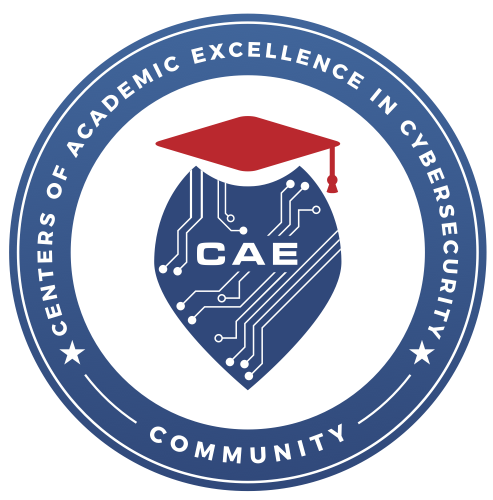Home | Advancing Technology Degrees | Human Computer Interaction
University of Advancing Technology offers a Bachelor of Science in Human Computer Interaction (HCI), which prepares students with real-world skills to tackle the evolution of IoT and UX infused hardware, software, mobile and more.
Human Computer Interaction has its foundations in the interfaces and interactions between electronic devices and the users that rely upon them. Great HCI design leads to the satisfied adoption of new, advanced and innovative user interface software and technologies. The study and practice of designing interactions transform the human computer interaction experience, so the computer is no longer a distracting focus of attention, but rather an invisible tool that empowers the individual user.
Strong HCI design enhances creativity, bolsters human-to-human collaboration, extends productivity, increases safety and makes interacting with devices enjoyable. Applications of good HCI practices include mobile and web applications, game and simulation, IoT devices, wearable technologies, novel use of computer technologies in education, intelligent interfaces, virtual and augmented reality environments and new I/O devices.
UAT’s Human Computer Interaction degree will help you propel interactions and interfaces into the future.
Check out some of this semester’s Human Computer Interaction courses and gear up for fresh challenges. Unlock new skills and power up your education.
This course unveils the art of visual storytelling. Storyboarding is an important skill for beginning directors to develop to pre-visualize shots and sets. It is also a critical skill in creating animation sequences and is important to the multimedia developer in planning the needs of a project. Students apply storyboarding techniques to scripts by accurately showing camera angles, placement of the actors, etc. Emphasis is placed on accuracy and presentation.
This course explores a full range of techniques and artistic viewpoints to animate drawings. Emphasis will be on learning to sketch the human and animal forms in both stick and geometric figures studies. Students will learn the skeletal and muscular makeup of the figures. Studies in the form of homework assignments will be required as well as in-class work. Long and short poses will be interspersed with exercises specifically designed to allow artists to heighten perceptions. Students will practice using the formulas for making character sketches more realistic by understanding the volumetric description and underlying structure of the human form. This course provides the most thorough experience drawing from live models.
This course will focus on human physical and cognitive capacities and how an understanding of them should inform the design of such everyday things as tools, information displays and computer software design. Among other topics, it will discuss the interaction of humans with computer systems, a domain generally known as Human Computer Interaction. The goal is to help students learn and apply cognitive science theory and principles to increase the convenient use of man-made objects and systems, to reduce errors, and to increase productivity and improve safety by using such tools and systems.
Often developers overlook the importance of the customer experience when using their products. As a result, it is becoming increasingly important for companies to provide customers with positive user experiences through fundamentals like navigation, search, usability and identifying the needs of the real user as well as that of the business. This course teaches students user experience design process from start to completion using appropriate design patterns, developing user personas, conducting usability evaluations within the cultural context and producing prototypes for further design research.
Haptic Technologies is a class that investigates the ways we can interface with our haptic system. The degree to which haptic feedback has been incorporated into new technology has been increasing greatly; from simple interfaces such as the vibration caused when we get a text message to more complex systems such as a pair of fully rendered haptic VR gloves. We will learn about the two sensory modalities that make up haptic sensation and the ways we can render those sensory modalities digitally. The class will culminate in the students creating their very own novel product/device that incorporates haptic feedback as one of the device’s main functionality.
The nervous system is the root of our biology. It manages everything we sense, will integrate all that information to formulate a decision, and carry out that decision through the body. Technology has now evolved to the point where we can measure and interact with these electrical signals that travel through the nervous system. In this course we will dive into all the different technologies that interact with the nervous system and how they do so. This will include technology such as Electroencephalogram (EEG), Brain Computer Interfaces (BCIs), Electromyography (EMG) Controlled Prosthesis, Deep Brain Stimulation (DBS), and many more. The class will culminate in the creation of your own Minimum Viable Product (MVP) of a technology that interacts with the nervous system.
Educating the next wave of innovators, our faculty leverage their experiences to mentor students to lead innovations and solve challenges in advancing technology.
UAT’s Synchronic Learning model provides an education framework that prepares superior graduates to become tomorrow’s innovators. This model embodies UAT’s methodologies, curricula and community dedicated to fostering an environment of innovation that promotes demonstrated mastery and job readiness.
How does UAT prepare superior graduates? Students are required to participate in projects that solve real problems. UAT requires students to innovate and create a working proof of concept that’s never been done before. Students complete internships, community projects and apprenticeship experiences to cultivate their ability to succeed in the workplace.

Network Security curriculum certified by the US National Security Agency's Information Assurance Courseware Evaluation program
